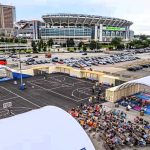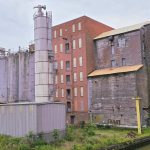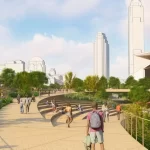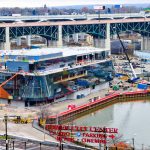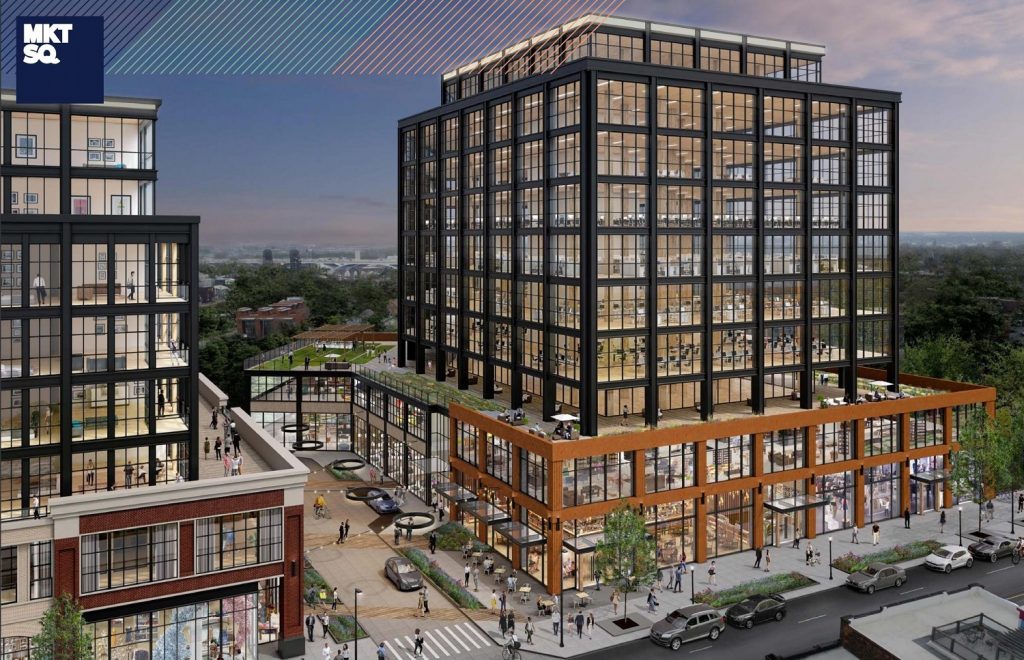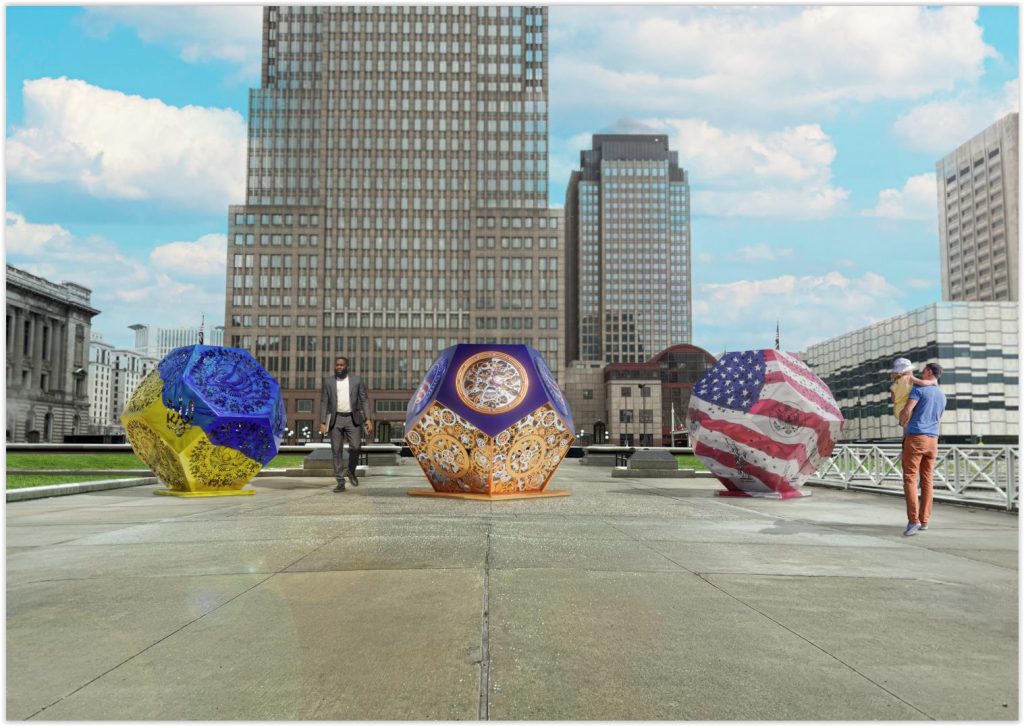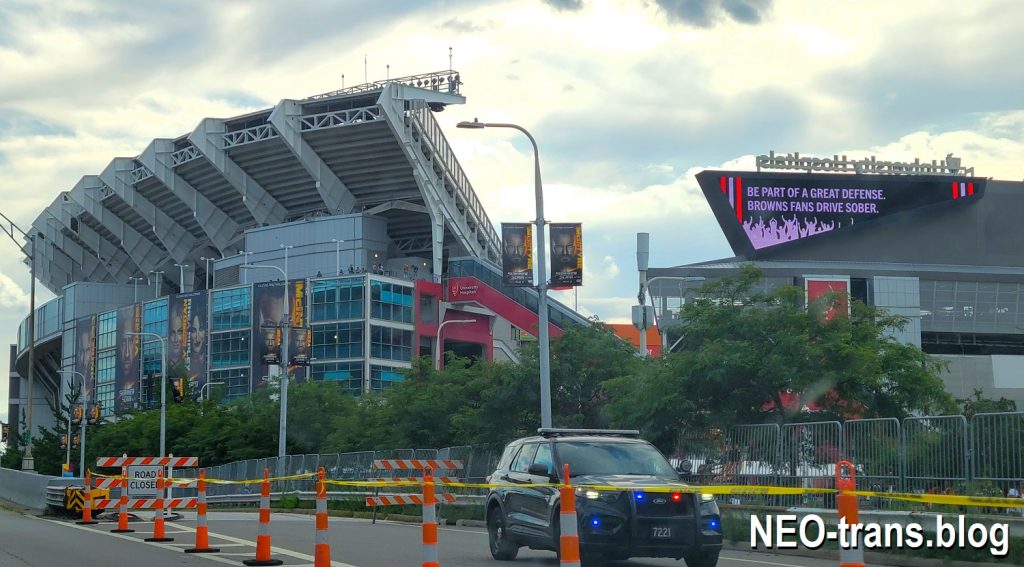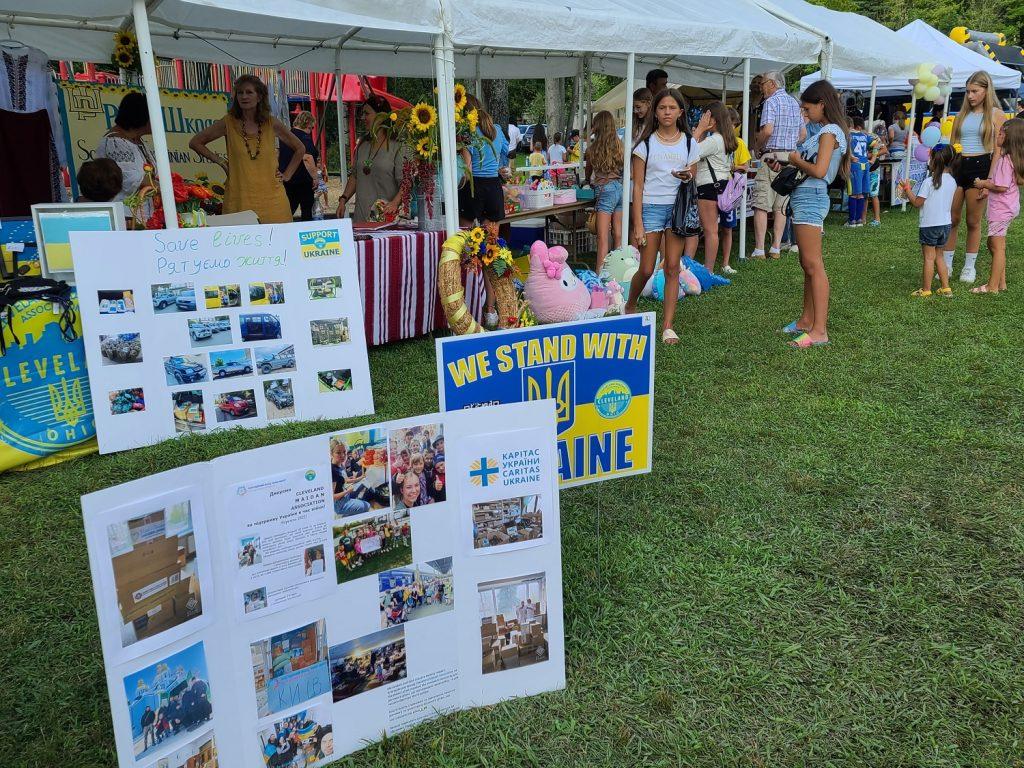
Ukrainian-Americans, refugees of the Russo-Ukrainian War plus their families and friends gathered Aug. 5-7 for the annual Pokrova Ukrainian Festival at the Pokrova Ukrainian Greek-Catholic Church in Parma. It was the largest turnout in recent memory, including before the pandemic. The number of attendees, including a large number of younger families and children, was apparently boosted by the arrival of so many war refugees to Greater Cleveland (KJP). CLICK IMAGES TO ENLARGE THEM
Ambitious refugees pursue, promise economic growth
While NEOtrans normally covers real estate developments and other business activities in Greater Cleveland, we also occasionally cover economic trends. Those trends, such as the city of Cleveland and Cuyahoga County adding more working-age population and creating more jobs than many Sunbelt economic powerhouses, also drive business growth and real estate development.
So does immigration, specifically foreign-born persons arriving our metro area as refugees escaping from war, famine or natural disasters, says Joe Cimperman, president of the nonprofit Global Cleveland. This organization has set up a Web page that describes how people can help aid local efforts in support of Ukrainian refugees. News coverage of Ukraine is especially timely as the embattled nation celebrates the 31st anniversary of its independence Aug. 24.
“We take a special interest in the situation developing in Ukraine,” Cimperman said in a written statement. “Our region hosts one of the largest Ukrainian populations in the United States. Our team is currently preparing Northeast Ohio to receive large numbers of Ukrainian refugees, and we are so grateful for any help that our community members can provide in order to make Northeast Ohio a better home for all newcomers.”
And things are getting a lot busier at the Cleveland office of the U.S. Committee for Refugees and Immigrants (USCRI), 3167 Fulton Rd. on Cleveland’s west side.
“Over the past few months, there is often a new (Ukrainian) family each day showing up at our office seeking support and assistance,” said Darren Hamm, USCRI’s Cleveland director. “This mirrors the experience of our partner agencies in the region, and across Ohio – a trend we envision continuing over the next year. Greater Cleveland is an extremely accommodating location for refugees and immigrants, which is built upon a long history of welcoming newcomers.”
Last year, Cleveland was named by the U.S. State Department as one of 19 American cities where it would direct thousands of refugees from war-torn Afghanistan. NEOtrans wrote about that crisis, too, because Cleveland became a great city because of immigrants. Once again, Cleveland needs more jobs, and immigrants start more new businesses than natives. And since Cleveland needs to reverse its decades-long population slide, attracting more immigrants is essential. Immigration is economic development, especially when the immigrants possess desired skills.
Hamm said that donated items that are needed the most are money, since refugees’ family and friends can’t always and consistently help out to cover emergency food, medical and housing needs. Donations are accepted by the nonprofit USCRI. Landlords are being asked to donate for a limited period of time an extra apartment, granny flat or other shelter in a safe, walkable, transit-accessible neighborhood to those in need. Refugees also need help building a credit rating, even if they arrive with money. The State Department will provide food stamps and Medicaid to refugees while they seek a work permit. See the USCRI’s Ukraine page for more information.
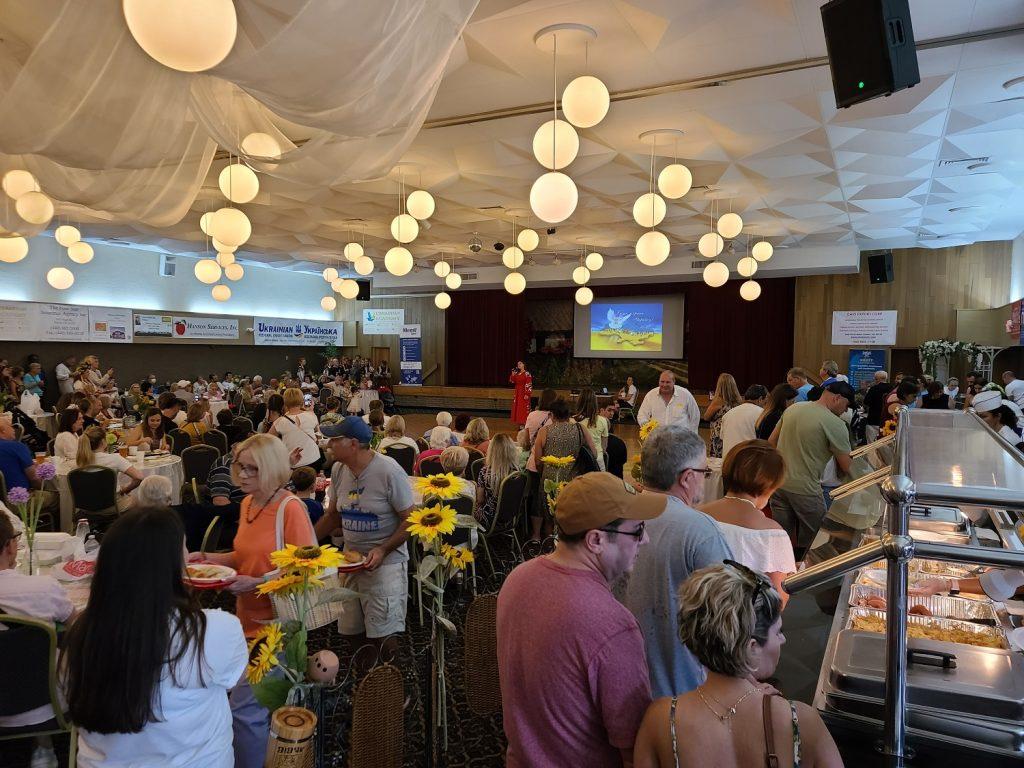
Inside and outside the Pokrova Ukrainian Greek-Catholic Church in Parma, thousands of Ukrainian-Americans and refugees gathered for the annual Ukrainian festival. Parma is the heart of Greater Cleveland’s Ukrainian community, especially the Ukrainian Village along State Road between Brookpark and Snow roads. But other parts of the metro area have many Ukrainian-Americans as well (KJP).
And there are a lot of refugees to support. According to USCRI, more than 3,000 Ukrainian families have come to Ohio since Feb. 24 when Russia expanded its 2014 invasion of Ukraine. Note that that number was for families, which could mean anywhere from one to eight people per family.
Most of those Ohio-bound families are coming to Greater Cleveland, perhaps as many as 60 to 70 percent, USCRI estimates. They come here because they need support and comfort, and they can often find it among family members and friends who are already here. But not everyone can find it. And even those who have probably don’t want to sleep on the sofa at their uncle’s or cousin’s home forever.
That 3,000 families figure doesn’t include those in the earliest wave of refugees who came through the borders of Canada and especially Mexico, with 90 percent arriving through the Tijuana/San Diego checkpoint, according to the Customs and Border Patrol agency. Nearly 21,000 Ukrainians arrived the USA through those borders in April, reports the Transactional Records Access Clearinghouse (TRAC) at Syracuse University. President Joe Biden authorized admission to the USA for up to 100,000 Ukrainian refugees.
After April, the second and apparently largest wave of refugees came directly to Greater Cleveland, a wave which accounts for the 3,000 families figure. And now, a third wave appears to be coming to the metro area from big coastal cities in the U.S. like New York City but there is no data yet on these numbers of refugees, according to USCRI. While some in that third wave are seeking a lower cost of living here, most are seeking the support of friends and family living in Greater Cleveland.
“We also have a strong network of care through the Refugee Services Collaborative that helps to provide a safety net and ensure those refugees who arrive are supported and connected,” Hamm added. “Ohio, and especially northeast Ohio, is fortunate to have a high concentration of Ukrainians which can provide a built-in support network, and a sense of place and belonging for those who have been displaced. While we provide a strong core of meaningful services delivered by Ukrainian speaking staff, you can imagine how important it can be being welcomed by those in the community who share in your cultural traditions and homeland.”
There are few things as heart-wrenching as seeing people forced to flee from their families, friends, careers and the country they love. I know because, in full disclosure, my wife Iryna Tkachenko and our son Martin were born in Ukraine. My wife is working in several endeavors to aid refugees from her homeland. One of those is a mural project, and potentially a program of multiple murals by Iryna Tkacheno’s lifelong friend, professional artist and Ukrainian resident Vera Matazova, to promote a message of peace and love to Greater Clevelanders.

Iryna Tkachenko, who represents Ukrainian artist Vera Matazova in the USA, poses next to the West 53rd Street bridge retaining wall in Cleveland. The wall faces Menlo Park Academy where her son attends school. A portion of Matazova’s mural “Pollinating Peace” is inset at the upper left and will cover the entire wall behind Tkachenko (KJP).
The mural is called “Pollinating Peace” and will feature colorful bumblebees on the side of the West 53rd Street bridge’s retaining wall that faces Menlo Park Academy where our son goes to school. It is the first of what Tkachenko and Matazova hope will be many murals throughout Cleveland. Using a projected stencil designed by Matazova, Menlo Park students will paint the mural in September but donations of materials, corporate sponsorships and small cash donations to the project’s GoFundMe campaign are still needed.
The mural project was endorsed by Menlo Park Academy and it received unanimous City Planning Commission approval June 17. Mayor Justin Bibb’s Office of Capital Projects also approved the project but it still needs city permits and a licensing agreement, said Tarra Petras, the city’s public art coordinator.
“I want to thank Iryna (Tkachenko) and Meno Park Academy and Tarra (Petras) for her great work,” said Ward 3 City Councilman Kerry McCormack at the planning commission meeting. “This is an incredible art installation. The strength that Iryna and her family have brought to this, to bring peace and positivity to the situation (in Ukraine) we’re all very aware of, it’s just very noble and a wonderful thing to do for our community. We’re proud to have her here in our community and I just want to fully support this artwork and how important it is today and in the future.”
But the mural program underscores the as-yet unmet need for many refugees already in Greater Cleveland and for those who still want to come here and be productive members of the community.
“Lots of Ukrainians are ambitious and are not afraid of hard work,” Tkachenko said. “Newcomers to Cleveland are already starting to be active in the community. They are forming groups and forums to help each other and to help create business opportunities. We all are learning how to live in this country and are happy to bring part of our culture here. This artwork of Vera (Matazova) will be not only a bright reminder about peace and kindness but also a great start if we would manage to help her and her family to come to America to do multiple mural programs for Greater Cleveland and stay safe away from war”
END

